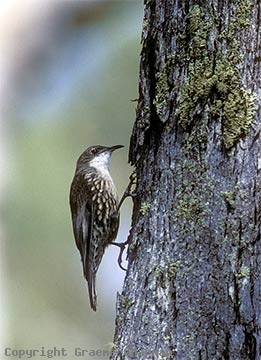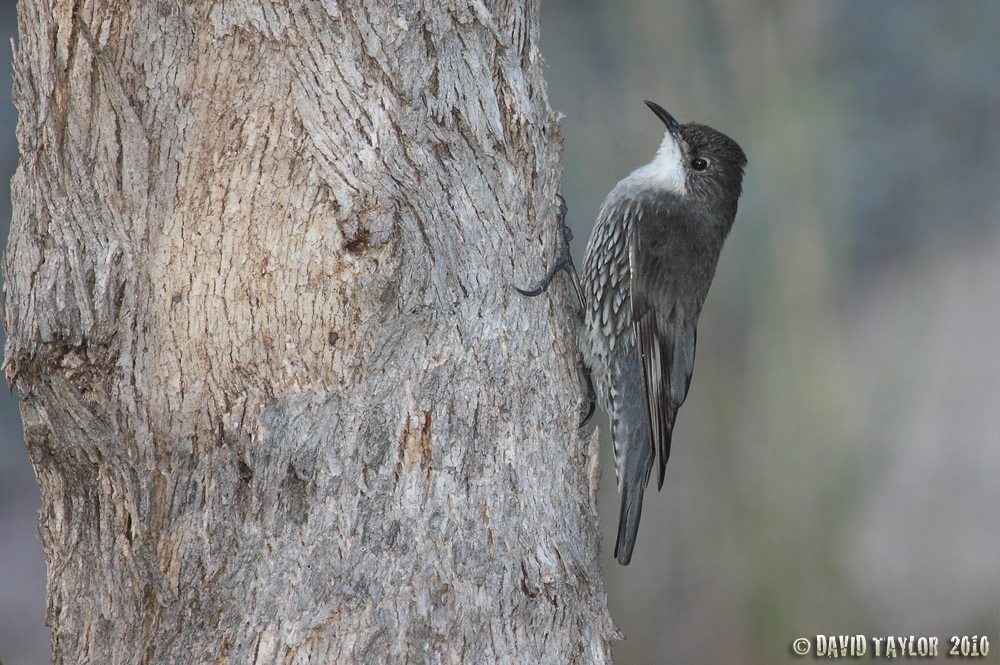
Cormobates leucophaeus
TAXONOMY
Certhia leucophaea Latham, 1802, Port Jackson, New South
Wales, Australia.
OTHER COMMON NAMES
English: Papuan treecreeper, little treecreeper; French: Йchelet
Leucophйe; German: Weisskehl-Baumrutscher; Spanish: Sube
Palo de Garganta Blanca.
PHYSICAL CHARACTERISTICS
6 in (15 cm); 0.8 oz (22 g). Brownish gray upperparts with
white throat and rufous patch at lower cheek; breast is buff
streaked with white.
DISTRIBUTION
Eastern Australia from north Queensland to Adelaide region.
Distinct subspecies in northeast Queensland, Clarke Range of
central coastal Queensland, and Mount Lofty Ranges of South
Australia.
HABITAT
Tropical, subtropical, and temperate rainforests, eucalypt
forests, and woodlands.
BEHAVIOR
Solitary or in pairs in strongly defended territories. Strident
whistling and piping, and more subdued chattering calls, display
by rapidly flicking tail open and closed with audible clicking
sound.
FEEDING ECOLOGY AND DIET
Climbs up trunks and along branches of rough-barked eucalyptus
and other trees, gleaning from the surface and probing into
bark for ants and other arthropods.
REPRODUCTIVE BIOLOGY
Breeds August–January, but mostly September/October, in hollows
in the trunks or branches of living or dead trees, often eucalypts.
Two or three eggs, incubated by female for 22–24
days. Nestlings fed by both parents, but only females brood
chicks; fledging at 26 days.
CONSERVATION STATUS
Secure, common and copes well with habitat fragmentation.
SIGNIFICANCE TO HUMANS
None known.
Photo Gallery of - White-throated treecreeper




 Animalia Life
Animalia Life